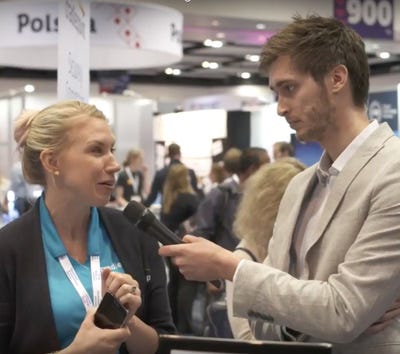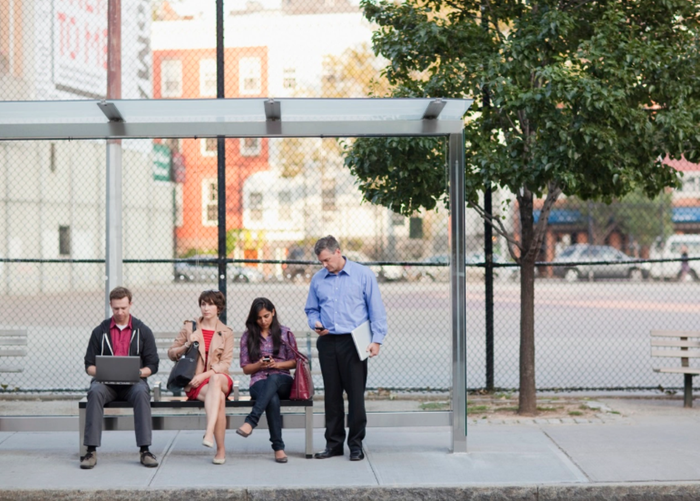Leading the Transition Toward Smart Buildings, Infrastructure and CitiesLeading the Transition Toward Smart Buildings, Infrastructure and Cities
Denis Canty of Johnson Controls discusses the impact that his company's work might have on cities, as well as the wider implications of technology making urban communities more connected.
May 31, 2017

Johnson Controls is a Fortune 100 global multinational company operating mainly as a smart building solution provider, with a particular focus on fire, security, power, HVAC and building controls. The organization boasts 4 million customers globally, three headquarters (Cork, Ireland; Milwaukee, Wis., US; and Shanghai, China) and more than 130 years of “innovation pedigree”.
As lead technologist for data science and IoT strategy, Denis Canty is part of the “Innovation Garage” located in Cork — Johnson Controls' advanced engineering organization that specializes in developing innovation ecosystems.
Next week, Canty and other representatives from Johnson Controls will share discoveries they've made in the fields of IoT engineering and innovation at IoT World in Dublin, spreading the proactive, forward-thinking attitude towards technology development that's becoming synonymous with the host country and the companies based there.
Ahead of the conference, I spoke with Denis Canty to learn more about the impact the work of Johnson Controls might have on our cities, as well as the wider implications of technology making these urban communities ever more connected.
Talk us through the work Johnson Controls is doing in Cork.
“We want to fundamentally change how businesses understand and improve their safety, security and operations using technology and analytics to deliver actionable learning and solve real-world problems.
“We are an in-house innovation hub acting like a startup, leading Johnson Controls to the forefront of sensor-based analytics, helping to fulfil Johnson Controls' mission of zero harm to people and the environment. We lead interaction and collaborations with internal and external partners and stakeholders to solve complex customer problems.
“With these innovative solutions, we are trying to create new upsell opportunities by using our existing sensor base of over 4 billion sensors deployed globally, with new technology that can complement our offerings in the smart building domain. We are lucky in Cork to have access to Ireland's smartest building, One Albert Quay. The technology in the building is broken into three categories. Our own Johnson Controls technology provided 70% of the installation from building launch. From building access and surveillance cameras to fire suppression and detection technology, we make the place really safe.
“The second set of technology is our partner technology to service the building outside of our offerings. These technologies include smart lift integration between our own Emerald product to the Schlinder Lift system, and our cool cashless restaurant technology.
“The third technology set is what we have installed since February from our partners globally. We have installed over 20 different future-looking solutions that we are exploring to see can they complement our existing offerings to our customers. Having IoT testbeds is going to be a critical aspect in how we best design and commercialize secure offerings for customers.”
How do you think smart cities are going to make humanity safer?
“The main aspect of how smart cities and IoT are going to make us safer is the increased visibility that will result. We have seen the effect of having surveillance cameras coming out of the buildings onto the streets, and how that helps with trouble-scene identification for the police forces. From a reactionary sense, when something happens, smartphones appear to be real-time surveillance that is uploaded to social media that the news channels get.
“It's the speed of delivery that has changed, but what's coming next is even more exciting. When the next wave of silicon design allows us to get even higher-resolution video, and facial recognition is combined with known criminal movement data, preventative crime fighting will be much more visible. The reliance on the 'lead' or the 'hunch' will diminish but not disappear. People still have a huge role in keeping our cities safe.
“It's not just the classical crime fighting that will benefit. Our emergency departments will have increased tools that will allow them to react in much more efficient ways to hazardous scenarios. Drones will be deployed prior to fire trucks to assess environments and feed information back over 5G in real time to fire chiefs.
“The word 'safe' can be much more than keeping crime at bay. People have an emotional need to reduce anxiety, stay healthy, have a good quality of life for them and their family. And it's not just at that single point in time. They want to ensure they are well notified of the threat index of the city they live in.”
What about the other side to this coin – how might smart cities make us less safe?
“Naturally, with this increased connectivity, devices and visibility, there are more points of attack for hackers to access the data streams. So it's the age-old adage of how we stay ahead of them to keep people and their personal information safe. There has been a lot of communication online and in forums about how blockchain will provide security for IoT. But I personally don't believe it's the silver bullet.
“To every algorithm there is either a weakness or a downside. Distributed ledger security through blockchain is a fantastic concept, but a lot of the more sensors are struggling to run their own applications, due to limited resources to run applications and manage the data flood.
“We need to look at other ways of doing this, from the inside out. For example, our bank details — they are valuable, and people want to get them. So what if we removed the value from having bank details in the first place? The psychological aspect of wanting to hack and commit cyber crime is also something we need to look at, along with identifying the hack much nearer the source.
So on balance, are smart cities destined to make citizens more or less safe?
“We are facing a period of increasing urbanization, with the population of our cities increasing dramatically. As this happens, safety is organically harder to maintain. This is why we require technology to address this concern. You have the smart cities environment itself and also the people who live in it. This means it is the ubiquitous safety models that protect both of these that will give us the greater results.
“If we think of it from an individual person's perspective, they have on average three devices each in the connected world, and they aren't doing a great job protecting them. What chance do they have when they reach 50 devices in their homes?
“I think the wave of technology will become a choice for the individuals. They can choose how smart their fridge is. They can choose which buildings they visit, and which cities they live in. I expect an increase in cyber-education, so that even the kids (and adults) really understand the effect of now putting images and personal data on social media, and thinking this can't hurt them in the future. We don't trust what we see in front of us, yet we trust these platforms unequivocally from app download.
“From the smart cities perspective, with the technologies offered by Johnson Controls, we can help in ensuring the cities are not only smart, but safe and sustainable. We have offerings in energy use optimisation, HVAC, fire and security, so we are leaders in building technology integration to help on this journey. Citizens will always feel safer in buildings that they know are designed with the core features in mind: they are safe, smart and sustainable.”
In the face of these cybersecurity concerns, how can we make future city infrastructures more resilient and difficult to disrupt?
“I think this is a silicon-to-cloud challenge and it needs to be addressed in that fashion. We can't wait for devices to be in the field, and then begin retrofitting next-gen security profiles.
“Standards will be important in ensuring the security profile is additive as you go up the stack. I like to call it the 'your IoT application security chain' — you add a link at every technology partition, to ensure you are covered at each layer. We have to ensure we don't let IoT distract from our ongoing obligations to ensure the last two hype cycle creators — cloud and big data — continue to improve from a security perspective.”
You specialize in both IoT and data. How can the massive quantities of data collected by smart cities help us do this?
“The answer is twofold. More data means more risk, but only if the data itself has increased in value. It's a little bit like the needle-in-a-haystack story. It's harder to find valuable data when you have a huge amount of invaluable data around it. Also, having increased datasets and can lead to more insight into cybersecurity risk factors.
“More data can also help build more comprehensive machine-learning models that can operate at the cybersecurity layer. But there is much more we can do with the data. We can use it to understand the 'why' — why we need all the devices in the first place, speaking to the philosophy aspect of IoT. We can assume that having all these sensors and data are actually making our cities better to live in, or we can ensure we have the correct measurements and governance in place to guarantee that this is the case.”
Does a smart city solution have to possess technology at its core? What should the top priority of any smart city solution be?
“I like to talk practicalities, and with so much technology, it's all about realizing just what will benefit cities, as every city is a different use case. Some cities have challenges around street crime, some around burglary and some even face threats from extreme weather. So it's not all about technology as mentioned above. The word 'safe' can be much more than keeping crime at bay. People have an emotional need to reduce anxiety, stay healthy, have a good quality of life for them and their family. And it's not just at that single point in time. They want to ensure they are well notified of the threat index of the city they live in.
“I guess I would view the smart cities of the future as being extensions of the human design paradigm. Cities, like our bodies, have a number of assets: infrastructure, communication, processing and intelligence. Trying to optimize them will be similar to how we are trying to optimize the human makeup through organic health and bionic additions. Reactionary operations and technology implants happen based on misuse of the components.
“We all have our faults: DNA inheritance that we can't control. Cities also have these, from a historical, geographical and economical perspective. If we speak to intelligence, we have done a great job in past decades at replicating left-brain thinking in the form of sequential, logical and analytical algorithm design. The next wave will be development on the right-side thinking, with features such as intuitive, context and empathy. Devices will need these features to ensure the proliferation of technology doesn't have a negative psychological impact on us.
“Sometimes we have to look at how we are designed in learning better ways to design smart cities. Smart city design based on both man and machine should lead to the best results.”
About the Author
You May Also Like








